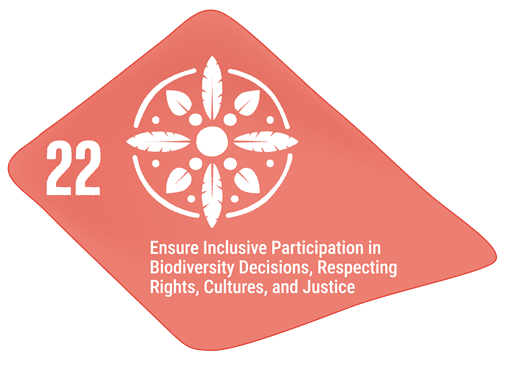 UNFPA
UNFPA
International Youth Day -- 12 August 2024
Statement of the Executive Secretary of the Convention on Biological Diversity, Astrid Schomaker, on the occasion of the International Day of the World's Indigenous Peoples:
This year we acknowledge and celebrate the contributions of young people to shaping a sustainable future through the use of digital technology.
As “digital natives”, digital technology to them is like a blank canvas. The potential of innovation knows no boundaries.
We need their energy and innovation to respond to the crisis afflicting our planet—a crisis in which biodiversity loss interacts with climate change and pollution, putting the future of humanity in harm’s way.
We must make space for them to help us find the solutions we need. But believing in their potential is not enough.
Disparities in access to technology persist, particularly in low-income countries and among young women.
The SDGs, which address those disparities, among other challenges, constitute the umbrella blueprint for a sustainable future.
In December 2022 the world adopted the historic Kunming-Montreal Global Biodiversity Framework –KMGBF—with the aim of halting and reversing biodiversity loss.
Both the SDGs and the KMGBF must be implemented by 2030.
To accelerate implementation, the world must use every asset, every shred of innovation and creativity. Young people have plenty to offer.
We at the Secretariat of the Convention on Biological Diversity believe that inquisitive, creative young minds can help accelerate the implementation of the KMGBF.
Digital technology can boost science, knowledge and bring about transformational change.
Young people, including the youth of indigenous peoples and local communities, are part of a whole-society solution to this global environmental crisis.
We must ensure intergenerational equity. Because we are in this together and we shall make it together.
Happy International Youth Day!
More information:
United Nations: International Youth Day
Related Targets in The Kunming-Montreal Global Biodiversity Framework
Ensure the full, equitable, inclusive, effective and gender-responsive representation and participation in decision-making, and access to justice and information related to biodiversity by indigenous peoples and local communities, respecting their cultures and their rights over lands, territories, resources, and traditional knowledge, as well as by women and girls, children and youth, and persons with disabilities and ensure the full protection of environmental human rights defenders.
Why is this target important?
Indigenous peoples and local communities have a cultural and holistic understanding of nature based on their traditional knowledge, practices and innovation. This information and understanding of biodiversity in turn play a crucial role in the conservation and sustainable use of biodiversity. The insights of indigenous and local communities on local ecosystems play a fundamental role in developing conservation initiatives that integrate cultural values and traditional governance systems, including sustainable use such as resource management techniques, traditional hunting and fishing, and elective harvesting. Further, their lands encompass diverse ecosystems, ranging from forests and wetlands to mountains and coastal areas with high concentrations of biodiversity and often promote sustainable land use, including agroforestry, rotational farming and community-based conservation management systems. Involving indigenous peoples and local communities in biodiversity conservation and the recognition of their perspectives and expertise can contribute to the development of context-specific and effective conservation strategies.
The target also recognizes the importance of meaningful participation of women and girls, as well as the inclusion of children, youth and persons with disabilities, in promoting social equity and empowering these groups to actively contribute to biodiversity conservation. It also highlights the need to protect environmental human rights defenders as they are at the forefront of protecting biodiversity by monitoring and exposing environmental violations, promoting sustainable practices and advocating for a human rights-based approach to conservation efforts.
Links to other elements of the Biodiversity Plan and other frameworks and processes.
- Actions to reach Target 22 should take into account the considerations for implementation identified in section C of the Kunming-Montreal Global Biodiversity Framework.
- Progress towards Target 22 will directly support the attainment of all goals and targets. However, progress towards this target is particularly relevant for the achievement of targets 1, 3, 5, 9, 13, 21 and 23. Conversely, progress towards targets 21 and 23 will support progress towards this target.
- Target 22 addresses issues that were also addressed by Aichi Biodiversity Target 18.
- Elements of Target 22 are also addressed in the targets of the Sustainable Development Goals, including targets 1.4, 5.5, 5.a, 10.2, 10.3, 16.3, 16.7, and 16.10.
